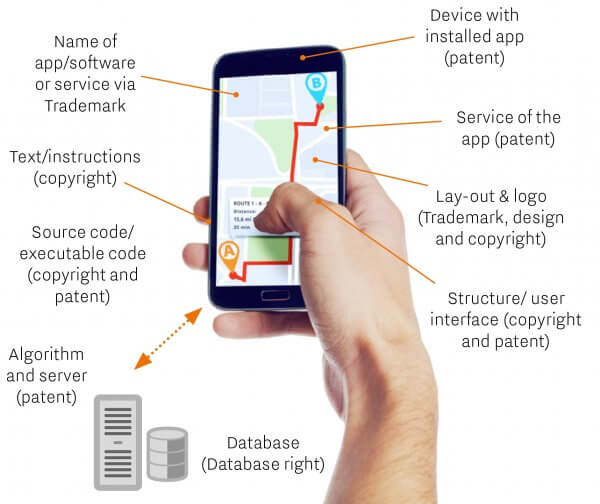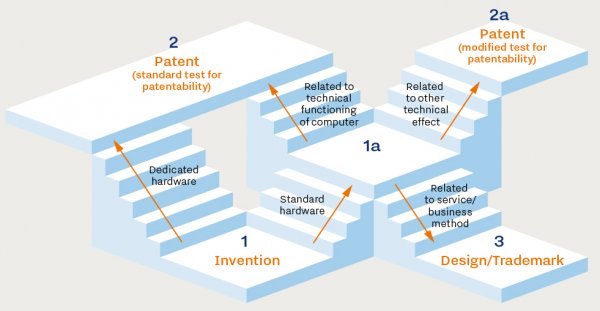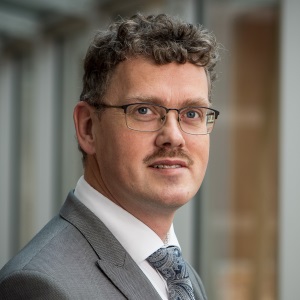Developing software apps requires investments in creativity, time and money. To make a return on these investments, it is necessary to deter copying and unauthorised distribution of your software. There are various ways by which your software may be protected, patenting being the most powerful. On this page we describe these various forms of intellectual property and how they can protect your investments.

Ways to protect your software apps
There are various forms of IP rights available to protect your software apps. Some rights are automatically obtained upon creation, other rights are obtained by simple registration or are filed and subjected to examination before a right is obtained. The most relevant types of protection and the important points of interest are:
Patent
Patents provide you the broadest protection because they protect a principle of operation or concept, for a maximum period of 20 years. A patent gives you the exclusive rights to exclude others from copying, using, importing, and selling a patented innovation. It is a powerful right that can only be obtained when an innovation can be regarded as contributing to technical progress. See ‘Steps to patent software’.
Copyright
Copyright arises from creation rather than registration and protects the work for a period of 70 years from the year in which the author dies. It provides a limited scope of protection, because only an identical or close copy will infringe. If the software app has an original logo, icon or layout, these too may enjoy (a separate) copyright.
Database law
Like copyright, a database right is an automatic right which exists as soon as the database exists in a recorded form. Database rights last for 15 years from the year in which the database was first made available.
Trademark
Trademark law protects the name of the app as well as the logo and layout by a registered trademark. A registered trademark may last indefinitely as long as it is extended every ten years. Sometimes the brand logo used for the application is a simple version of an existing company logo. In that case it may be worth exploring whether additional protection is required.
Design right
Design rights protect the appearance of a product for up to 25 years. If the app’s logo, icon or layout is distinct from existing apps, a design registration will contribute to IP protection. Like copyright, a database right is an automatic right which exists as soon as the database exists in a recorded form. Database rights last for 15 years from the year in which the database was first made available.
Open source software
The use of open source software may offer significant advantages, but license conditions require special attention. Some licenses require the source code of the final software product to be published and made freely available to other parties. In some cases, license conditions even prohibit patent protection.
Steps to patent software
Software inventions are a special type of inventions in the field of patent protection. This distinct category of inventions may not be regarded as a ‘technical’ invention. However, there may be aspects of the software applications that are critical for your inventive concept and can be identified as truly technical and can therefore be patented. Our patent attorneys can explore together with your technical staff, whether such aspects can be identified. The figure below illustrates decision steps if your software can be patented.

Start from square 1 and find your way to square 3. This is always possible. If you want to go to square 2: did you create dedicated hardware? Is it novel? Is it inventive to the known products? If you use standard hardware, you are on square 1a. Your software may have a clear connection to the functioning of the computer. This may render the computer, in combination with the software, and the software as such, novel and inventive according to standard patentability test. A modified test for patentability is applied, if there is another technical effect. This effect may for example concern inventive algorithmic combining of data sources; inventive forms of user interaction/ user interface; and inventive use of signal paths. You may reach square 2a.


